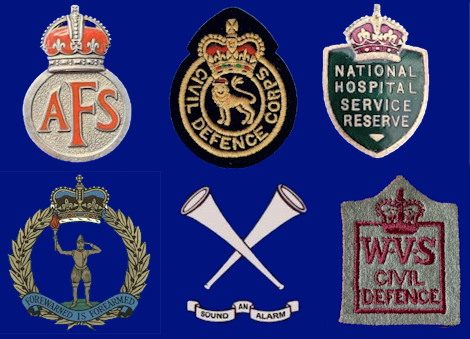UK Cold War Civil Defence Organisations
With
just a couple of exceptions, the civil defence organisations of the
cold war era no longer exist, and those that remain in name no
longer serve the primary role intended during that period. The
majority of the organisations were formed as a result of the 1948
Civil Defence Act.
- The Auxiliary Fire Service had the primary role of re-enforcing the peace-time local authority fire services and providing emergency fire fighting columns.
- The Civil Defence Corps, was in some respects, based upon the WWII Civil Defence, but with a vastly increased role and organisation.
- The National
Hospital Service Reserve. The purpose of the N.H.S.R.was
to recruit, train and organise in peacetime a Reserve of men and
women qualified in first aid and home nursing, who would in time
of war not only provide the additional staff required for the
greatly expanded hospital service, but would also man some 2,000
Mobile First Aid Units and some 800 static first-aid posts at
hospitals.
- The Royal
Observer Corps, the first trials of an Observer Corps took
place in 1925. The Corps became Royal in 1941. Until 1951 its
primary role was in reporting enemy aircraft, it then took on
the role of nuclear monitoring and reporting.
- The United Kingdom Warning and Monitoring Organisation (UKWMO) operated between 1957 and 1992 to provide UK military and civilian authorities with data on nuclear explosions and forecasts of fallout across the country in the event of nuclear war.
- The Womens'
Royal Voluntary Service was established in 1938, as the
Women's Voluntary Services for Air Raid Precautions, with the
objective of getting women involved in the ARP (Air Raid
Precautions) service. The founder was Stella Isaacs. Since then
it's role and name has changed, a couple of times, it is now the
Royal Voluntary Service.

